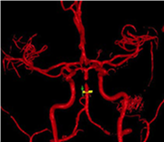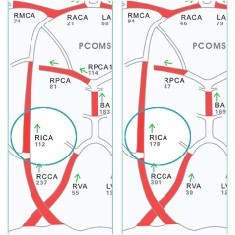VasSol Ushers in a New Stroke Diagnostic Standard of Care
The Journal of the American Medical Association - Neurology (JAMA Neurology) has indicated it will publish the results of the landmark stroke diagnostic study - VERiTAS (Vertebrobasilar Flow Evaluation and Risk of Transient Ischaemic Attack and Stroke study (VERiTAS). Acceptance by this highly prestigious and influential peer-reviewed journal is a significant reflection of the importance of the study and the wide-ranging implications of the NOVA blood flow non-invasive MRI-based, objective stroke diagnostic system.
Over more than 10 years, VasSol,Inc. developed the NOVA system to quickly and decisively determine a patient’s stroke risk. It does so by computing the patient’s blood flow dynamics via a short MR scan called a NOVA® scan or QMRA® (Quantitative MRA). The NOVA System can be adapted to diagnose blood flow risk in any area of the body, with a huge market opportunity.
With NOVA, a patient’s stroke risk can be determined using validated data as a basis for deciding treatment – usually blood thinners or surgical/endovascular procedure. Existing diagnostic approaches – which involve guesswork – are imprecise.

NOVA's efficacy was confirmed by the VERiTAS study, a six-year, blinded, 72-patient prospective study conducted at:
- University of Illinois at Chicago
- Washington University of St. Louis
- University of California at Los Angeles
- Columbia University in New York
- University of Toronto/Toronto Western Hospital
Patients determined to be at low risk can avoid unnecessary further testing and risky interventions that can make their condition worse by inducing a stroke or even death.
For patients determined to be at high risk, surgical interventions can now be supported by quantitative data. For such patients, the risk of not having surgery can be shown via NOVA to be greater than having the surgery.
Stroke is the fifth leading cause of death in the United States, and the leading cause of permanent disability among Americans. Stroke costs the U.S. an estimated $34 billion each year[1]. For decades, physicians have been struggling to find an accurate, objective way to measure stroke risk as a basis to decide how to treat a patient.


